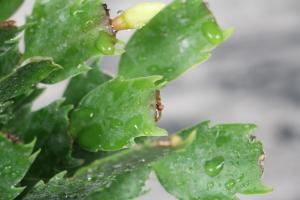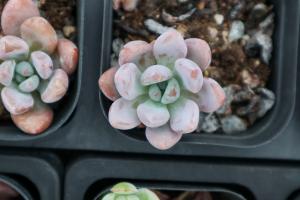Introduction
Potato bugs, also known as Colorado potato beetles, are a common pest that can cause significant damage to tomato plants. These bugs have a voracious appetite and can quickly strip the leaves from the plants, causing reduced yield or even plant death. Fortunately, there are several effective strategies for getting rid of potato bugs and preventing further damage to your tomato plants.
1. Handpicking and Squishing
One of the most effective ways to get rid of potato bugs is to handpick them from your tomato plants. This method is best for small infestations and can be done by simply searching the plants for any bugs and squishing them by hand. Be sure to check both sides of the leaves and pick off any eggs or larvae you may find. While time-consuming, handpicking is a safe and natural method that does not involve the use of any chemicals.
2. Beneficial Insects
Another natural method for controlling potato bugs is to introduce beneficial insects to your garden. Ladybugs, lacewings, and praying mantises are all natural predators of potato bugs and can help keep their populations under control. You can purchase beneficial insects from garden supply stores or attract them to your garden by planting a diverse range of flowers and herbs.
3. Neem Oil
Neem oil is a natural pesticide that is derived from the seeds of the neem tree. It is an effective treatment for many plant pests, including potato bugs. You can purchase neem oil online or from garden supply stores and apply it to your tomato plants as directed. Be sure to apply the oil to both the tops and bottoms of the leaves and reapply after any rainfall.
4. Insecticidal Soap
Insecticidal soap is a safe and effective pesticide that can be used to control potato bugs on tomato plants. You can purchase insecticidal soap at most garden supply stores and apply it to your plants as directed. Be sure to coat both sides of the leaves, as well as any stems or branches where potato bugs may be hiding.
5. Crop Rotation
Crop rotation is an important strategy for preventing the spread of potato bugs in your garden. These pests are attracted to tomatoes, potatoes, and other solanaceous plants. By rotating your crops each year, you can disrupt the life cycle of the bugs and reduce their populations in your garden. Be sure to avoid planting tomatoes and other solanaceous plants in the same location two years in a row.
Conclusion
Potato bugs can be a frustrating and damaging pest for tomato plants, but there are several effective strategies for controlling their populations. Handpicking, introducing beneficial insects, using natural pesticides like neem oil and insecticidal soap, and practicing crop rotation are all safe and effective methods that can help keep your tomatoes healthy and thriving.

 how many times do yo...
how many times do yo... how many planted tre...
how many planted tre... how many pine trees ...
how many pine trees ... how many pecan trees...
how many pecan trees... how many plants comp...
how many plants comp... how many plants can ...
how many plants can ... how many plants and ...
how many plants and ... how many pepper plan...
how many pepper plan...
































